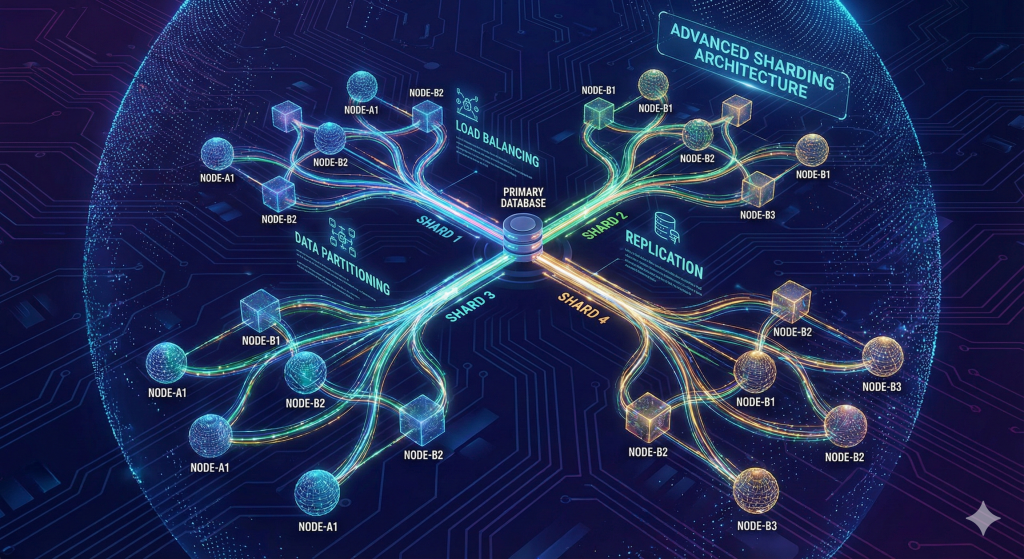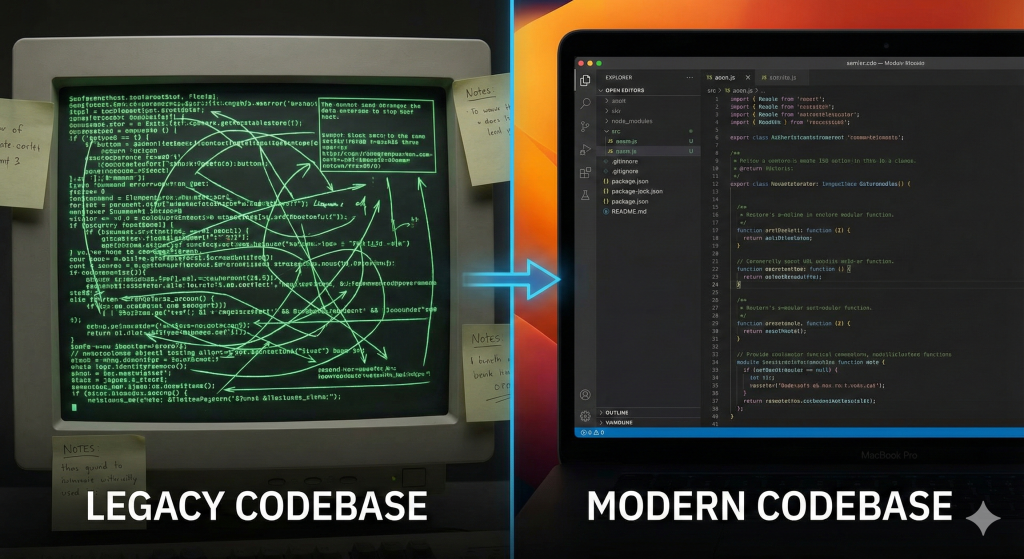Introduction to CI/CD in Microservices
In today’s fast-paced software development landscape, Continuous Integration and Continuous Deployment (CI/CD) have become indispensable strategies for organizations striving to deliver high-quality applications rapidly and reliably. When combined with a microservices architecture, these methodologies offer a framework for managing complexity through independent service lifecycles. In a microservices setup, each service is developed, tested, and deployed independently, allowing teams to iterate faster, scale more effectively, and respond quickly to changing markets and customer needs. This post will walk you through the foundational concepts of CI/CD tailored for microservices, while also addressing common challenges and best practices.
Benefits of CI/CD for Microservices Architecture
Adopting CI/CD in a microservices environment brings a host of benefits. Automation of testing, building, and deployment processes not only accelerates release cycles but also increases reliability. When each microservice is managed through its own dedicated pipeline, updates and bug fixes can be rolled out without impacting the entire ecosystem. Furthermore, key advantages include:
- Accelerated Development Cycles: Enables teams to integrate and deliver new features more frequently.
- Reduced Downtime: Independent service deployments reduce the risk of systemic failures during updates.
- Enhanced Code Quality: Automated testing at unit, integration, and end-to-end levels ensures comprehensive quality checks.
- Improved Scalability and Resilience: CI/CD pipelines facilitate rapid scaling and quick recovery from issues, critical in highly distributed architectures.
For instance, automated testing at multiple levels—unit, integration, and end-to-end—helps maintain code quality and system reliability. This strategy is supported by industry experts, ensuring that changes are validated before they merge into a shared codebase (DEV Community). Additionally, adopting serverless architectures can further streamline your CI/CD process (Embracing Serverless Computing).
Challenges of Implementing CI/CD in Microservices
While the benefits are compelling, integrating CI/CD pipelines within a microservices architecture comes with its own set of challenges. One primary difficulty stems from managing the interdependencies between various services. Each microservice may have its own repository, language, and deployment requirements, leading to:
- Complex Dependency Management: Ensuring that changes in one service do not inadvertently affect others.
- Environment Consistency: Achieving consistency across development, testing, and production environments is challenging without proper containerization.
- Testing Overhead: The need for extensive automated tests at multiple levels can result in longer pipeline execution times if not optimized.
- Security and Configuration Management: Ensuring that each service complies with security standards while maintaining centralized configurations for smooth deployments.
These challenges require careful planning and the adoption of best practices such as containerization and independent service pipelines (Gurukul DevOps).
Key Components of a CI/CD Pipeline
A robust CI/CD pipeline for microservices typically comprises several essential components that work in tandem to drive efficiency and reliability. The key components include:
- Automated Testing Frameworks: This covers unit, integration, and end-to-end testing. Automated tests validate each new code change, ensuring quality at every stage (DEV Community). For a deep dive into building robust APIs, check out Mastering RESTful API Development with Go.
- Containerization: Using Docker and similar tools to encapsulate each microservice along with its dependencies, which guarantees consistency across various environments. Container orchestration tools like Kubernetes play a crucial role in automating the deployment process (CircleCI).
- Service-Level Pipelines: Allowing independent testing and deployment of each microservice simplifies the process and aligns with the autonomy that microservices are built upon (Implementing Event-Driven Architectures in Go).
- Configuration and Secret Management: Utilizing centralized stores (e.g., Consul or etcd) to manage configurations and environment-specific parameters ensures consistency and security.
- Monitoring and Observability: Tools like Prometheus for metrics and the ELK Stack for log management provide insights into the performance and potential issues within the pipeline (Mergify Blog).
- Security Practices: Integrating security scanning and vulnerability assessments, using tools like Snyk or SonarQube, to ensure the pipeline is fortified against threats (Codefresh).
Best Practices for CI/CD in Microservices
Implementing best practices is vital to overcome the inherent challenges of CI/CD in a microservices environment. Some of the top recommendations include:
- Automate Testing at Multiple Levels: Emphasize unit, integration, and end-to-end tests to catch issues early in the development process (DEV Community).
- Leverage Containerization: Use Docker and Kubernetes for creating consistent, scalable environments which ease the transition from development to production (CircleCI).
- Implement Service-Level Pipelines: Treat each service as an autonomous entity with its own CI/CD pipeline, reducing complexity and allowing parallel deployments (Gurukul DevOps).
- Centralize Configuration Management: Maintain consistency through centralized configuration solutions and manage environment-specific settings appropriately (Gurukul DevOps).
- Enhance Monitoring and Observability: Utilize robust observability tools to track system performance and quickly respond to incidents (Mergify Blog).
- Adopt Security-First Practices: Integrate security scans into your pipelines and ensure that security is a shared responsibility across teams (Codefresh).
- Utilize Feature Flags: Implement feature flags for controlled and gradual rollouts, making it easy to disable problematic features without redeploying code (Cloudangles).
- Foster a Collaborative DevOps Culture: Encourage cross-team collaboration to ensure all parties—from development to operations—share responsibility for the deployment process (Gurukul DevOps), as well as developing essential soft skills (Enhancing Software Development Through Soft Skills) and enhancing communication strategies (Enhancing Communication in Large-Scale Software Development).
Popular Tools for CI/CD in Microservices
The success of a CI/CD implementation in a microservices ecosystem is highly dependent on employing the right toolset. Developers and DevOps teams typically pair several tools together to cover various aspects of the CI/CD lifecycle:
- Containerization and Orchestration: Docker for creating container images and Kubernetes for orchestrating and managing deployments at scale.
- CI/CD Pipeline Orchestration: Jenkins, GitLab CI, or CircleCI are popular choices to automate the build, test, and deployment stages (CircleCI).
- Configuration Management: Tools like Consul, etcd, and HashiCorp Vault help in managing secrets and configurations centrally.
- Monitoring and Logging: Prometheus, Grafana, and the ELK Stack provide visibility into application performance and health.
- Security Scanning: Snyk, SonarQube, and other vulnerability scanning tools are well-integrated within most modern CI/CD pipelines (Codefresh).
Step-by-Step Guide to Setting Up a CI/CD Pipeline
Setting up a CI/CD pipeline for microservices involves several sequential steps. The following guide lays out a step-by-step approach:
- Assess Your Architecture: Start by mapping out microservices, their dependencies, and defining clear interfaces.
- Containerize Your Applications: Use Docker to encapsulate each microservice. This ensures a consistent development environment and streamlines deployment.
- Choose the Right CI/CD Platform: Select a platform such as Jenkins, GitLab CI, or CircleCI that aligns with your team’s skill set and project needs.
- Set Up Automated Testing: Integrate unit, integration, and end-to-end tests into your pipeline to catch issues early. Automation ensures that regression bugs are minimized (DEV Community).
- Implement Service-Level Pipelines: Create individual pipelines for each microservice to deploy them independently, reducing the risk of cascading failures (Implementing Event-Driven Architectures in Go).
- Centralize Configurations and Secrets: Utilize tools like Consul or etcd to ensure seamless configuration management across different environments.
- Integrate Monitoring and Logging: Add observability tools to capture metrics, logs, and traces, enabling proactive issue detection (Mergify Blog).
- Deploy and Refine: Begin with a subset of services, deploy them, gather feedback, and iterate. Use feature flags to manage new feature rollouts safely (Cloudangles).
Addressing Common Issues in CI/CD for Microservices
As with any complex system, issues will surely arise. Here are some common problems and how to address them:
- Pipeline Bottlenecks: Optimize test suites and parallelize processes to prevent slow-downs in your pipeline.
- Dependency Conflicts: Embrace semantic versioning and contract testing to ensure changes in one service do not break others.
- Environment Mismatches: Rely on containerization to encapsulate entire environments, minimizing surprises between development and production.
- Security Vulnerabilities: Implement regular automated security scans and integrate security best practices in the pipeline to catch vulnerabilities early (Codefresh).
Case Studies: Successful CI/CD Implementations
Numerous organizations have reaped significant benefits from implementing CI/CD pipelines tailored for microservices. For example, large-scale enterprises have successfully rolled out independent pipelines that reduce downtime during deployments and allow for rapid iteration on individual components. Companies have demonstrated:
- Enhanced Agility: Faster iterations with reduced risk thanks to autonomous pipelines.
- Improved Reliability: Robust testing and observability mechanisms have decreased production issues.
- Simplified Operations: Containerization and orchestration have led to more predictable and scalable deployments.
These case studies underscore the value of adopting a service-level CI/CD approach. By isolating deployments and continuously monitoring the system, organizations can stay ahead of operational challenges and deploy faster with confidence (Gurukul DevOps).
FAQ
What is CI/CD, and why is it important for microservices?
CI/CD stands for Continuous Integration and Continuous Deployment. It is essential for microservices because it enables independent, automated testing and deployment of each service. This autonomy improves overall reliability and scalability, and allows teams to roll out updates without affecting the entire ecosystem.
How do containers improve the CI/CD process for microservices?
Containers, like those created with Docker, encapsulate an application along with its dependencies, ensuring consistent environments across development, testing, and production. When combined with orchestrators like Kubernetes, containers can scale dynamically and are easier to manage, streamlining the entire CI/CD process.
What are the key challenges to expect when implementing CI/CD in a microservices architecture?
Common challenges include managing the dependencies between services, ensuring environment consistency, and maintaining robust automated tests for each service. Security and configuration management are also critical areas that require special attention.
Conclusion: Future Trends in CI/CD for Microservices
The landscape of CI/CD for microservices is continually evolving. Future trends suggest an even stronger integration of machine learning for anomaly detection in pipelines, increased use of Infrastructure as Code (IaC) for deployment consistency, and more robust observability solutions that not only monitor but also predict issues before they occur. With cloud-native technologies and enhanced automation, the future of CI/CD in microservices promises to be more resilient, secure, and responsive to rapid changes in technology and market demands.
As organizations embrace these trends and refine their deployment processes, they will be better positioned to innovate and deliver exceptional digital experiences. The key is to start small, iterate consistently, and leverage the best of modern tools and practices to create a seamless, efficient, and secure CI/CD pipeline tailored for microservices.
By addressing testing, containerization, dependency management, monitoring, and security head on, teams can overcome the hurdles in CI/CD implementation and pave the way for a future of agile, resilient systems.


